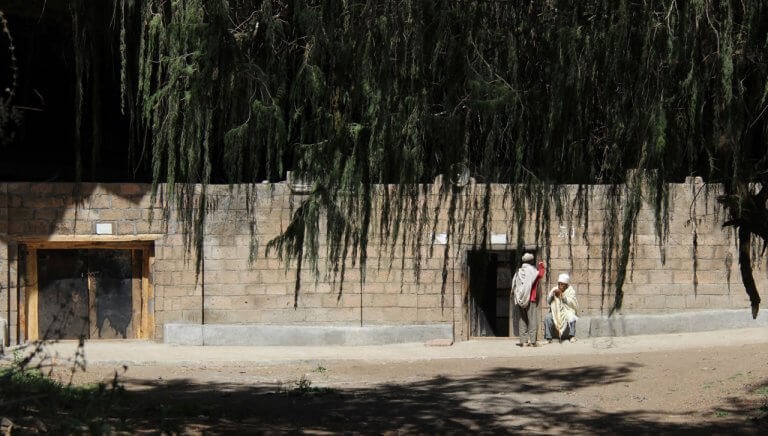Day 38 19 May

Left Gonder by plane to Lalibela home of the famous stone churches. The flight was so short that the seatbelt signs didn’t come off because as soon as we hit the cruising height we started descent.
We were met at the airport by guide Bale and driver Orion and half an hour later we were at the Lalibela Lodge gazing down into the valley. Our room was the size of a ballroom and very different to our previous lodge.
After lunch we headed out with the guys and started by walking through the Saturday market-full of donkeys, goats, hops and grains of all kinds. As Bale pointed out some people have to come over 30 kms to participate.

Walking out from the market we headed to Labella’s main attraction-churches hewn out of stone. King Lalibela created eleven churches out of stone in the 11th century to make the point that Lalibela was the new capital of Ethiopia. The ancient capital Axum was yesterdays news and he wanted people to know it.He called it New Jerusalem complete with a River Jordan as a reaction to the Muslim occupation of the “other ” Jerusalem.



The churches are reached by narrow walkways between the churches and the surrounding rock. The symbolism featured in all the churches relates to Christ’s life with Mary and St George featuring in most.

The overriding feeling as you walk around is the sheer effort it must have taken to carve these buildings out of the surrounding rock and also the permanence of the Christian tradition in Ethiopia. The Ethiopian Orthodox Church has always been a feature was aligned closely with the monarchy.According to its history and legend the origins of the original Ethiopian monarchy started with the Queen of Sheba visiting King Solomon in Jerusalem and later bearing him a son.The story gets very complicated because in this telling she comes from Ethiopia but other countries and religions have different versions.However this legend and history was used as justification to establish a Solomonic dynasty which started with Melenik I and ended with Haile Selaisse. Although this wasn’t continuous and was interrupted by Kings from other ethnic backgrounds such as Lalibela.Ethiopian history is extremely difficult to get your head around as it is complicated by the ebb and flow of the different ethnic groupings that tried to exert their influence.






